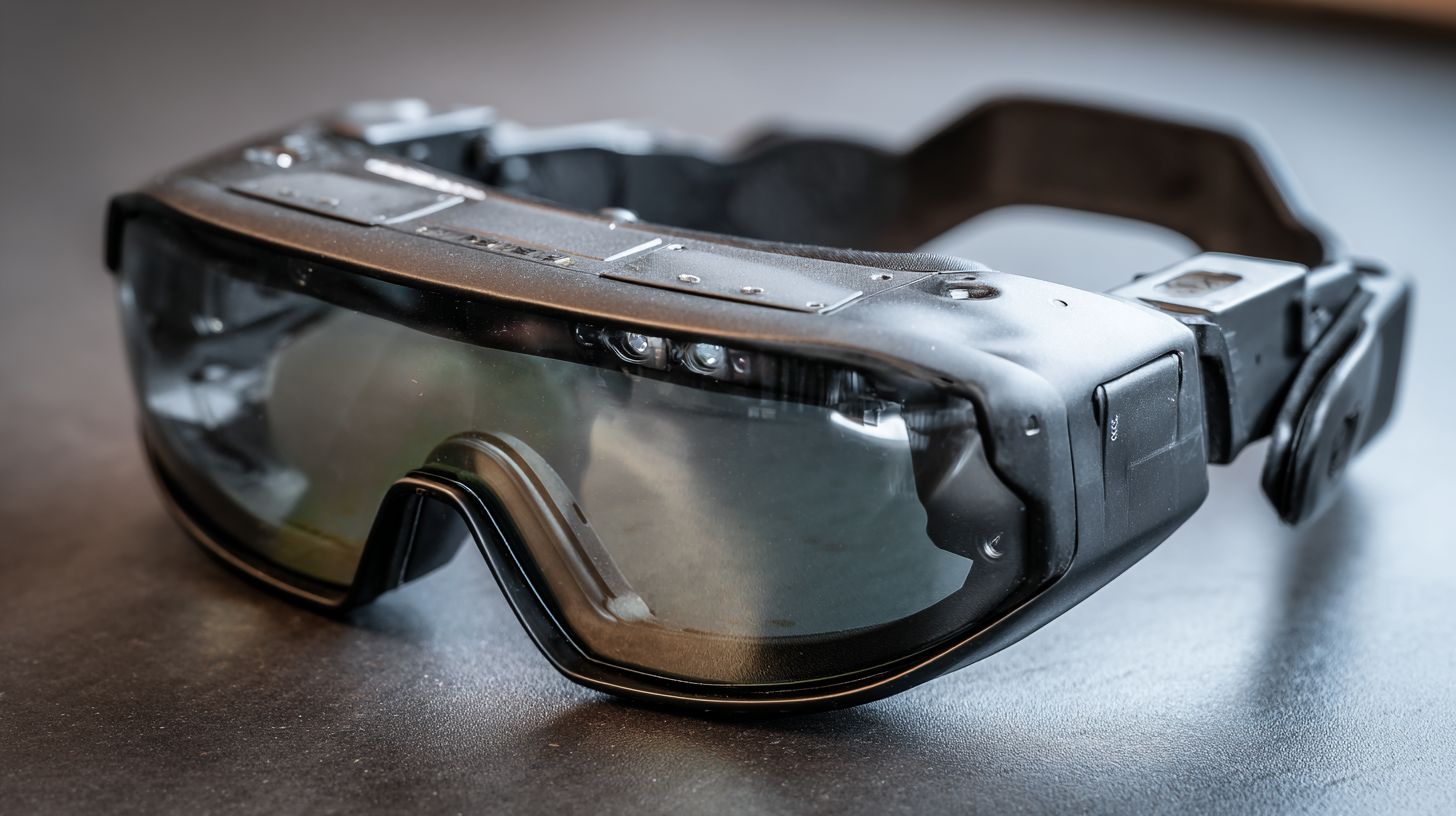Exploring the Latest Innovations in Optical Equipment for Enhanced Vision and Performance
In the rapidly evolving field of optical equipment, recent innovations have significantly enhanced vision and performance across various industries, from healthcare and manufacturing to sports and consumer electronics. According to a report by Grand View Research, the global optical filters market alone is projected to reach USD 5.1 billion by 2025, driven by advancements in technology and increasing demand for high-quality imaging solutions. Furthermore, the integration of smart technologies into optical systems is expected to revolutionize how professionals and consumers use these tools, as highlighted by a study from MarketsandMarkets, which predicts that the optical communication market will grow from USD 30.4 billion in 2020 to USD 55.8 billion by 2026. This article explores the latest innovations in optical equipment, showcasing how these advancements can enhance performance and visual clarity, ultimately transforming industries and improving quality of life.

Advancements in Lens Technology for Superior Clarity and Comfort
The advancement of lens technology has revolutionized the optical equipment industry, enabling superior clarity and comfort for users. Recent studies from the Vision Council indicate that approximately 75% of adults use some form of vision correction, highlighting the demand for innovative lens solutions. One of the significant breakthroughs has been the development of digital freeform technology, which allows for the customization of lenses to an individual's specific prescription and lifestyle needs. This technology enhances visual acuity across all zones of the lens, reducing distortions that were commonly experienced with traditional lens designs.
Moreover, the integration of high-index materials has led to thinner and lighter lenses, significantly improving wearing comfort. According to a report by Grand View Research, the global eyeglass lens market is projected to reach $20 billion by 2025, driven primarily by these technological innovations. Anti-reflective coatings and blue light blocking features are becoming standard, catering to the increasing number of users exposed to screens for extended periods. These advancements not only elevate the user experience by providing clearer vision but also protect eye health, making modern lenses an indispensable component of daily life.

Integrating Smart Features in Optical Devices for Enhanced Usability
Recent advancements in optical equipment have significantly transformed the landscape of visual technology by integrating smart features into optical devices. These innovations are not merely about enhancing clarity and precision but also focus on user experience and connectivity. Modern optical systems incorporate augmented reality overlays, which help users access real-time information without interrupting their visual engagement with the world. This integration of smart technology allows for a seamless interaction between the device and the user's environment, ultimately enhancing usability.
Moreover, smart optical devices now often include built-in sensors and computerized functionalities that tailor performance to individual user needs. For instance, eyewear can adjust tint levels automatically based on lighting conditions, providing optimal vision without requiring manual adjustments. In addition, connectivity features allow users to sync their optical devices with smartphones, enabling functionalities like notifications and health monitoring. These enhancements not only improve vision but also streamline everyday tasks, making advanced optical devices a crucial part of modern life.

The Role of AR and VR in Revolutionizing Vision Correction Solutions
The integration of augmented reality (AR) and virtual reality (VR) is transforming traditional vision correction solutions, creating innovative options for those with visual impairments. AR technologies overlay digital information onto the real world, allowing wearers to experience enhanced visuals while maintaining a connection to their surroundings. This means that individuals can receive real-time information about their environment, improving navigation and everyday tasks without invasive procedures. VR, on the other hand, immerses users in entirely virtual environments, providing therapeutic programs designed to train and improve visual skills through interactive challenges.
Tips for those interested in exploring AR and VR for vision correction include starting with mobile applications that utilize these technologies to offer tailored exercises for your specific visual needs. Additionally, seek out local vision therapy specialists who might incorporate these methods into their practice, ensuring a personalized approach to your vision care. Experimenting with AR glasses that enhance contrast and brightness in your everyday life can also be an empowering way to gain confidence in your visual capabilities.
As these technologies continue to evolve, the future looks promising for enhanced vision solutions. Combining entertainment, healthcare, and lifestyle, AR and VR not only provide correction but also improve the overall quality of life for individuals facing vision challenges. With ongoing advancements, users can expect even more refined tools that cater to their unique requirements, redefining the landscape of vision correction for years to come.
Exploring Innovations in Optical Equipment
This chart illustrates the anticipated market growth for various innovations in optical equipment, highlighting how technologies such as AR, VR, and AI are set to reshape vision correction solutions.
Innovative Materials in Eyewear for Improved Durability and Functionality
The world of eyewear is undergoing a remarkable transformation, driven by the introduction of innovative materials that enhance both durability and functionality. Traditional lenses often succumb to scratches and damage over time, prompting the need for more resilient alternatives. Advances in material science have led to the development of high-performance polycarbonate and Trivex lenses, which are notably lighter and shatter-resistant. These materials not only improve the longevity of eyewear but also provide greater visual clarity, making them ideal for active lifestyles.
Furthermore, the integration of advanced coatings and treatments has significantly enhanced the usability of modern eyewear. Anti-reflective coatings minimize glare, improving vision in challenging lighting conditions, while hydrophobic treatments help repel water and prevent smudging. Additionally, the incorporation of smart technologies, such as anti-fogging layers and blue light filters, addresses the evolving needs of users in a digital age. As these innovative materials and technologies converge, eyewear is becoming not just a protective accessory but a crucial tool for enhanced vision and performance in everyday life.
Future Trends in Optical Equipment: What to Expect in the Next Decade
The optical equipment industry is poised for significant advancements over the next decade, driven by rapid technological progress and increasing application demands. As global markets recover from COVID-19, the optical transceiver market is seeing an uptick in size and relevance, particularly in transmission rates ranging from under 10 Gbps to 40 Gbps and beyond. This growth reflects not only an increase in digital communication needs but also highlights the importance of optical technology as the backbone of emerging telecommunications infrastructure.
In parallel, the 3D measurement market is projected to experience substantial expansion, with estimates indicating a rise from $12.6 billion in 2022 to approximately $38.97 billion by 2029. This surge, with a remarkable compound annual growth rate of 17.5%, underscores the integration of optical components within various industries, including manufacturing and autonomous systems. Furthermore, the anticipated shift towards more localized production and the continued evolution of photonic technologies will likely catalyze innovation, positioning optical equipment as a critical element in both current and future technological landscapes.
Exploring the Latest Innovations in Optical Equipment for Enhanced Vision and Performance - Future Trends in Optical Equipment: What to Expect in the Next Decade
| Innovation | Description | Expected Impact | Timeline for Adoption |
|---|---|---|---|
| Adaptive Lenses | Lenses that automatically adjust tint and focus based on environmental conditions. | Greater comfort in varying light situations and improved vision clarity. | By 2025 |
| Augmented Reality (AR) Glasses | Glasses that overlay digital information onto the real world. | Enhanced workflow and navigation in various professional settings. | 2026-2027 |
| Smart Contact Lenses | Contact lenses with monitoring capabilities for health metrics. | Real-time health tracking and diagnosis capabilities. | By 2028 |
| Enhanced Optical Coatings | Coatings that repel scratches, smudges, and water effectively. | Improved durability and maintenance of optical devices. | By 2024 |
| 3D Imaging Systems | Systems that provide detailed three-dimensional views for diagnostics. | Revolutionizing medical imaging and precision in various fields. | 2025 |
Related Posts
-

Exploring the Features and Applications of Top Optical Equipment for Global Procurement
-

Top Strategies for Enhancing Practice Efficiency with Optometry Equipment
-

Mastering Optical Equipment: A Step-by-Step Guide for Beginners
-

Paper Bag Market Insights and Opportunities at the 2025 China 138th Export Fair
-

Essential Checklist for Selecting the Perfect Sunglasses Case for Your Business Needs
-

Top Strategies for Choosing the Best Glasses Case for Durability and Style
